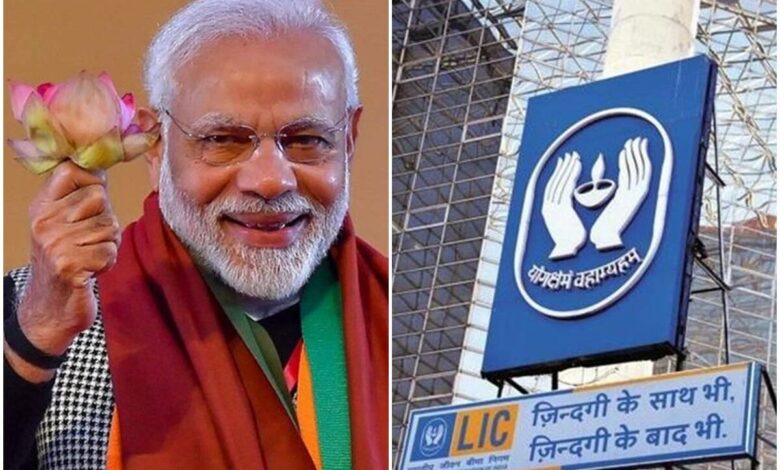The story of the LIC public issue: What all do you need to know? and how is the ground being set by the government? Why is it as popular as it is?

India’s largest financial institution Life Insurance Corporation of India, commonly abbreviated as LIC, is soon going to be put on the table for investors. To capture the mega bid of the public sector company with assets of over Rs 32 lakh crore, decks are being cleared. To steadfast and expedite the process of the sale, the government is working its fingers to the bone for systematically removing and extirpating all the hurdles in the way. On the same lines, the market regulator SEBI (Securities and Exchange Board of India) has also relaxed the rules and regulations to make the listing process of LIC smoother and faster.
What steps have been taken by the regulator SEBI to smoothen the Initial Public Offer process of LIC?
In the present scenario, the issuers holding a market capitalisation of Rs 4,000 crore post-issue are supposed to offer at least 10 per cent to the public. The 10 per cent is to be calculated on the post-issue capital, this way, the firm shall achieve a public holding of a minimum of 25 per cent within three years.
But now, to better the process of LIC IPO, SEBI has now allowed the issuer to make an offer of only Rs 10,000 crore along with 5 per cent of whatever is the incremental amount beyond the band of Rs 1 lakh crore ultimately making the size of public issuance dependent on the valuation of the company.
What does this decision actually mean for the issuing firm?
Let’s analyse this alteration by taking numbers into account.
According to Traditional and conventional system: The post-issue market capitalisation of the company is likely to be as much as Rs 10 lakh crore which can be stretched to reach Rs 15 lakh crore once we have the embedded valuation of the firm. The Embedded Value or EV of a life insurance company is equal to the present value of its expected future profits along with the adjusted value of its net assets.
According to the new SEBI rule: With the new rules in place, on a market capitalisation of Rs 10 lakh crore, LIC will have to make an issue of Rs 10,000 crore plus 5 per cent of Rs the incremental amount beyond Rs 1 lakh crore, that is, 9 lakh crores in this case. With this assumption, the total issue amount comes out to be only Rs 55,000 crore. Similarly, in the case when the market capitalisation is Rs 15 lakh crore, the size of the Initial Public Offer shall increase to reach Rs 80,000 crore and would be Rs 45,000 crore if the market capitalisation is set at Rs 8 lakh crore. Even if the market cap is Rs 8 lakh crore, LIC would still be the largest IPO to hit the Indian capital market.
When will the LIC IPO hit the markets for investors?
The IPO is set to shine in the financial markets in the third quarter of the new financial year with the economy on the pathway to growth with an enormous and profitable comeback trail along with the buoyant sentiments in the stock markets.
It has also been announced by the government that up to 10 per cent of the issue size of the Initial Public Offer is supposed to be reserved for the policyholders of the 30 crore policies being services by the LIC across the country. With everything in place, the government has its fingers crossed for smooth sailing for the IPO.
What factors are likely to affect the issue?
The strength of the equity market currently is indeed a strong factor to rely on for the IPO success, there are a few other factors that are likely to make this IPO reach its optimum valuation. These factors include the herculean global liquidity present in the financial markets right now and the tremendous and vast inflow of FPIs (foreign portfolio investments) in the country. Needless to say, since the issue of LIC is the largest to hit the Indian market, we would need exhaustive support from all kinds of investors — Foreign Portfolio Investors (FPIs), Direct Institutional Investors (DIIs) High Networth Individuals (HNIs) as well as the retail investors.
In the current financial year, that is FY 2020-21, the Indian equity markets have witnessed FPIs inflows of a record net Rs 2,61,968 crore, and are likely to continue on account of excessive market liquidity due to the additional stimulus in the United States as well as other investor countries.
How has been the progress in the listing formalities so far?
Considerable progress has been made with the government making The LIC Amendment Act a part of the Finance Bill. This has brought forth the required legislative amendment for the launch of the IPO.
Despite being under the supervision of the IRDAI (Insurance Regulatory and Development Authority), LIC is governed and supervised in abidance to the LIC Act of 1956. And, according to this act, the insurance company is allowed to obtain a special dispensation in several areas such as higher stakes in companies.
The process of overseeing the government’s equity in public sector firms is carried out by the Department of Investment and Public Asset Management or DIPAM. It has already appointed Milliman Advisors, an actuarial firm, for determining the embedded value (EV) of LIC. The responsibility of being pre-IPO transaction advisors has been handed over to Deloitte and SBI Caps.
How crucial will the pricing be?
Pricing of the issue is one of the key aspects of the entire arrangement. It is no doubt that the issue will help the government raise the quintessential capital for the purpose of funding its planned budgetary expenditure in the coming fiscal, the investors in the issue will have to be extremely cautious with the pricing. They need to carefully analyse the issue before pouring in their money.
The government has learnt its lesson of giving prime focus on the pricing of the firms by its past experience with IPOs of two general insurance companies that got listed in 2017. These two were the General Insurance Corporation of India Ltd and the New India Assurance Co Ltd. The shares of the New India Assurance IPO were offered to investors in the range band of as much as Rs 770-800 which have now acutely stooped down to as low as Rs 164. On the other hand, shares of the General Insurance Corporation which were initially offered at Rs 912, have plunged down to only Rs 170. In fact, both companies also issued one bonus share for every share which was owned by its shareholders during June and July 2018. In other words, every investor holding one share of GIC or NIACL got one more share.
If, for example, you held one share of GIC, you got another one at Rs 912 making you now a holder pf two shares (one allotment, the other bonus) at an amount of Rs 170 each. Even then, you would be sitting on a heap of loss of 62 per cent over your initial investment in the IPO.
Why has the LIC issue been attracting massive and undivided investor attention?
To begin with, it simply the sheer size of the Life Insurance Corporation of India. To make my point clearer, I would like to state some statistics here, which might change the perspective with which one looks at LIC and its public issue.
- The company has recorded a total first-year premium of more than Rs 1.75 lakh crore in the year ended March 2020
- LIC has an agent network of as many as 22.5 lakh individuals
- The corporation has over 4,851 offices pan India
- LIC enjoys a brand value worth 8.11 billion U.S. dollars
- The value in the above pointer positions the company on the second spot of the top 100 most valuable Indian brands.
- LIC owns enormous real estate assets across the country
- LIC is the biggest institutional investor in India owning a diverse and magnum investment portfolio, which in itself can generate massive investment returns.
Apart from the above facts, there is huge growth potential in the firm, which the investors may be eyeing at.
According to the industry insiders, if 22 lakh agents of the company sell even one single additional policy in a time span of 365 days, it would lead to a huge volume increment in the cumulative numbers.
Apart from this extravagance, one might also consider the fact that while LIC will have a full-fledged corporate structure and independent directors, the firm will not cease to have government support or sovereign guarantee. This one single aspect of the issue might interest and provide comfort to the FPIs and other foreign as well as domestic investors.




